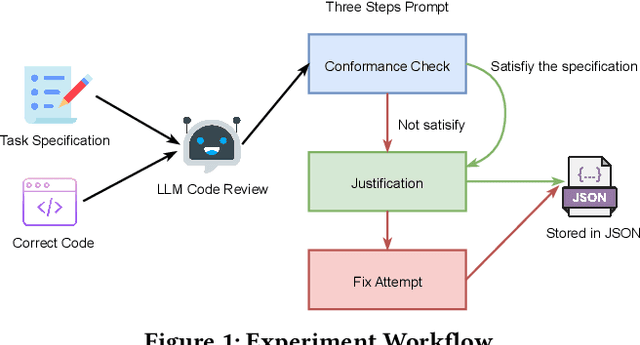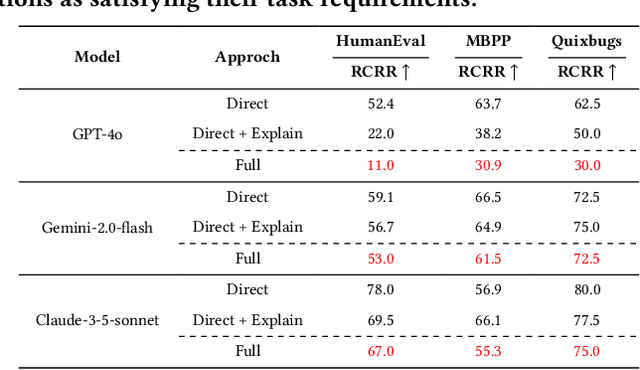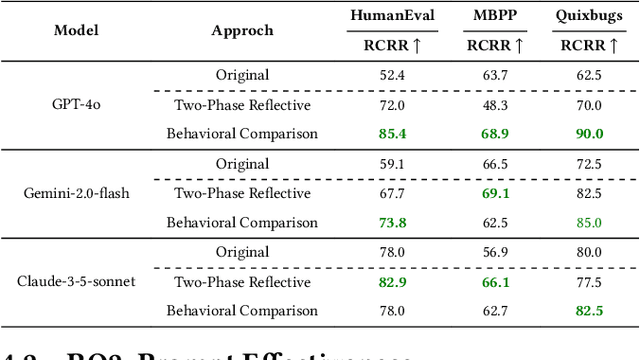Huaming Chen
Feature-Selective Representation Misdirection for Machine Unlearning
Dec 18, 2025Abstract:As large language models (LLMs) are increasingly adopted in safety-critical and regulated sectors, the retention of sensitive or prohibited knowledge introduces escalating risks, ranging from privacy leakage to regulatory non-compliance to to potential misuse, and so on. Recent studies suggest that machine unlearning can help ensure deployed models comply with evolving legal, safety, and governance requirements. However, current unlearning techniques assume clean separation between forget and retain datasets, which is challenging in operational settings characterized by highly entangled distributions. In such scenarios, perturbation-based methods often degrade general model utility or fail to ensure safety. To address this, we propose Selective Representation Misdirection for Unlearning (SRMU), a novel principled activation-editing framework that enforces feature-aware and directionally controlled perturbations. Unlike indiscriminate model weights perturbations, SRMU employs a structured misdirection vector with an activation importance map. The goal is to allow SRMU selectively suppresses harmful representations while preserving the utility on benign ones. Experiments are conducted on the widely used WMDP benchmark across low- and high-entanglement configurations. Empirical results reveal that SRMU delivers state-of-the-art unlearning performance with minimal utility losses, and remains effective under 20-30\% overlap where existing baselines collapse. SRMU provides a robust foundation for safety-driven model governance, privacy compliance, and controlled knowledge removal in the emerging LLM-based applications. We release the replication package at https://figshare.com/s/d5931192a8824de26aff.
GuardFed: A Trustworthy Federated Learning Framework Against Dual-Facet Attacks
Nov 12, 2025Abstract:Federated learning (FL) enables privacy-preserving collaborative model training but remains vulnerable to adversarial behaviors that compromise model utility or fairness across sensitive groups. While extensive studies have examined attacks targeting either objective, strategies that simultaneously degrade both utility and fairness remain largely unexplored. To bridge this gap, we introduce the Dual-Facet Attack (DFA), a novel threat model that concurrently undermines predictive accuracy and group fairness. Two variants, Synchronous DFA (S-DFA) and Split DFA (Sp-DFA), are further proposed to capture distinct real-world collusion scenarios. Experimental results show that existing robust FL defenses, including hybrid aggregation schemes, fail to resist DFAs effectively. To counter these threats, we propose GuardFed, a self-adaptive defense framework that maintains a fairness-aware reference model using a small amount of clean server data augmented with synthetic samples. In each training round, GuardFed computes a dual-perspective trust score for every client by jointly evaluating its utility deviation and fairness degradation, thereby enabling selective aggregation of trustworthy updates. Extensive experiments on real-world datasets demonstrate that GuardFed consistently preserves both accuracy and fairness under diverse non-IID and adversarial conditions, achieving state-of-the-art performance compared with existing robust FL methods.
Foe for Fraud: Transferable Adversarial Attacks in Credit Card Fraud Detection
Aug 20, 2025Abstract:Credit card fraud detection (CCFD) is a critical application of Machine Learning (ML) in the financial sector, where accurately identifying fraudulent transactions is essential for mitigating financial losses. ML models have demonstrated their effectiveness in fraud detection task, in particular with the tabular dataset. While adversarial attacks have been extensively studied in computer vision and deep learning, their impacts on the ML models, particularly those trained on CCFD tabular datasets, remains largely unexplored. These latent vulnerabilities pose significant threats to the security and stability of the financial industry, especially in high-value transactions where losses could be substantial. To address this gap, in this paper, we present a holistic framework that investigate the robustness of CCFD ML model against adversarial perturbations under different circumstances. Specifically, the gradient-based attack methods are incorporated into the tabular credit card transaction data in both black- and white-box adversarial attacks settings. Our findings confirm that tabular data is also susceptible to subtle perturbations, highlighting the need for heightened awareness among financial technology practitioners regarding ML model security and trustworthiness. Furthermore, the experiments by transferring adversarial samples from gradient-based attack method to non-gradient-based models also verify our findings. Our results demonstrate that such attacks remain effective, emphasizing the necessity of developing robust defenses for CCFD algorithms.
Uncovering Systematic Failures of LLMs in Verifying Code Against Natural Language Specifications
Aug 17, 2025


Abstract:Large language models (LLMs) have become essential tools in software development, widely used for requirements engineering, code generation and review tasks. Software engineers often rely on LLMs to assess whether system code implementation satisfy task requirements, thereby enhancing code robustness and accuracy. However, it remains unclear whether LLMs can reliably determine whether the code complies fully with the given task descriptions, which is usually natural language specifications. In this paper, we uncover a systematic failure of LLMs in evaluating whether code aligns with natural language requirements. Specifically, with widely used benchmarks, we employ unified prompts to judge code correctness. Our results reveal that LLMs frequently misclassify correct code implementations as either ``not satisfying requirements'' or containing potential defects. Surprisingly, more complex prompting, especially when leveraging prompt engineering techniques involving explanations and proposed corrections, leads to higher misjudgment rate, which highlights the critical reliability issues in using LLMs as code review assistants. We further analyze the root causes of these misjudgments, and propose two improved prompting strategies for mitigation. For the first time, our findings reveals unrecognized limitations in LLMs to match code with requirements. We also offer novel insights and practical guidance for effective use of LLMs in automated code review and task-oriented agent scenarios.
FedDifRC: Unlocking the Potential of Text-to-Image Diffusion Models in Heterogeneous Federated Learning
Jul 09, 2025



Abstract:Federated learning aims at training models collaboratively across participants while protecting privacy. However, one major challenge for this paradigm is the data heterogeneity issue, where biased data preferences across multiple clients, harming the model's convergence and performance. In this paper, we first introduce powerful diffusion models into the federated learning paradigm and show that diffusion representations are effective steers during federated training. To explore the possibility of using diffusion representations in handling data heterogeneity, we propose a novel diffusion-inspired Federated paradigm with Diffusion Representation Collaboration, termed FedDifRC, leveraging meaningful guidance of diffusion models to mitigate data heterogeneity. The key idea is to construct text-driven diffusion contrasting and noise-driven diffusion regularization, aiming to provide abundant class-related semantic information and consistent convergence signals. On the one hand, we exploit the conditional feedback from the diffusion model for different text prompts to build a text-driven contrastive learning strategy. On the other hand, we introduce a noise-driven consistency regularization to align local instances with diffusion denoising representations, constraining the optimization region in the feature space. In addition, FedDifRC can be extended to a self-supervised scheme without relying on any labeled data. We also provide a theoretical analysis for FedDifRC to ensure convergence under non-convex objectives. The experiments on different scenarios validate the effectiveness of FedDifRC and the efficiency of crucial components.
FedSC: Federated Learning with Semantic-Aware Collaboration
Jun 26, 2025



Abstract:Federated learning (FL) aims to train models collaboratively across clients without sharing data for privacy-preserving. However, one major challenge is the data heterogeneity issue, which refers to the biased labeling preferences at multiple clients. A number of existing FL methods attempt to tackle data heterogeneity locally (e.g., regularizing local models) or globally (e.g., fine-tuning global model), often neglecting inherent semantic information contained in each client. To explore the possibility of using intra-client semantically meaningful knowledge in handling data heterogeneity, in this paper, we propose Federated Learning with Semantic-Aware Collaboration (FedSC) to capture client-specific and class-relevant knowledge across heterogeneous clients. The core idea of FedSC is to construct relational prototypes and consistent prototypes at semantic-level, aiming to provide fruitful class underlying knowledge and stable convergence signals in a prototype-wise collaborative way. On the one hand, FedSC introduces an inter-contrastive learning strategy to bring instance-level embeddings closer to relational prototypes with the same semantics and away from distinct classes. On the other hand, FedSC devises consistent prototypes via a discrepancy aggregation manner, as a regularization penalty to constrain the optimization region of the local model. Moreover, a theoretical analysis for FedSC is provided to ensure a convergence guarantee. Experimental results on various challenging scenarios demonstrate the effectiveness of FedSC and the efficiency of crucial components.
FedSKC: Federated Learning with Non-IID Data via Structural Knowledge Collaboration
May 25, 2025Abstract:With the advancement of edge computing, federated learning (FL) displays a bright promise as a privacy-preserving collaborative learning paradigm. However, one major challenge for FL is the data heterogeneity issue, which refers to the biased labeling preferences among multiple clients, negatively impacting convergence and model performance. Most previous FL methods attempt to tackle the data heterogeneity issue locally or globally, neglecting underlying class-wise structure information contained in each client. In this paper, we first study how data heterogeneity affects the divergence of the model and decompose it into local, global, and sampling drift sub-problems. To explore the potential of using intra-client class-wise structural knowledge in handling these drifts, we thus propose Federated Learning with Structural Knowledge Collaboration (FedSKC). The key idea of FedSKC is to extract and transfer domain preferences from inter-client data distributions, offering diverse class-relevant knowledge and a fair convergent signal. FedSKC comprises three components: i) local contrastive learning, to prevent weight divergence resulting from local training; ii) global discrepancy aggregation, which addresses the parameter deviation between the server and clients; iii) global period review, correcting for the sampling drift introduced by the server randomly selecting devices. We have theoretically analyzed FedSKC under non-convex objectives and empirically validated its superiority through extensive experimental results.
The Tower of Babel Revisited: Multilingual Jailbreak Prompts on Closed-Source Large Language Models
May 18, 2025



Abstract:Large language models (LLMs) have seen widespread applications across various domains, yet remain vulnerable to adversarial prompt injections. While most existing research on jailbreak attacks and hallucination phenomena has focused primarily on open-source models, we investigate the frontier of closed-source LLMs under multilingual attack scenarios. We present a first-of-its-kind integrated adversarial framework that leverages diverse attack techniques to systematically evaluate frontier proprietary solutions, including GPT-4o, DeepSeek-R1, Gemini-1.5-Pro, and Qwen-Max. Our evaluation spans six categories of security contents in both English and Chinese, generating 38,400 responses across 32 types of jailbreak attacks. Attack success rate (ASR) is utilized as the quantitative metric to assess performance from three dimensions: prompt design, model architecture, and language environment. Our findings suggest that Qwen-Max is the most vulnerable, while GPT-4o shows the strongest defense. Notably, prompts in Chinese consistently yield higher ASRs than their English counterparts, and our novel Two-Sides attack technique proves to be the most effective across all models. This work highlights a dire need for language-aware alignment and robust cross-lingual defenses in LLMs, and we hope it will inspire researchers, developers, and policymakers toward more robust and inclusive AI systems.
From Compliance to Exploitation: Jailbreak Prompt Attacks on Multimodal LLMs
Feb 02, 2025



Abstract:Large Language Models (LLMs) have seen widespread applications across various domains due to their growing ability to process diverse types of input data, including text, audio, image and video. While LLMs have demonstrated outstanding performance in understanding and generating contexts for different scenarios, they are vulnerable to prompt-based attacks, which are mostly via text input. In this paper, we introduce the first voice-based jailbreak attack against multimodal LLMs, termed as Flanking Attack, which can process different types of input simultaneously towards the multimodal LLMs. Our work is motivated by recent advancements in monolingual voice-driven large language models, which have introduced new attack surfaces beyond traditional text-based vulnerabilities for LLMs. To investigate these risks, we examine the frontier multimodal LLMs, which can be accessed via different types of inputs such as audio input, focusing on how adversarial prompts can bypass its defense mechanisms. We propose a novel strategy, in which the disallowed prompt is flanked by benign, narrative-driven prompts. It is integrated in the Flanking Attack which attempts to humanizes the interaction context and execute the attack through a fictional setting. To better evaluate the attack performance, we present a semi-automated self-assessment framework for policy violation detection. We demonstrate that Flank Attack is capable of manipulating state-of-the-art LLMs into generating misaligned and forbidden outputs, which achieves an average attack success rate ranging from 0.67 to 0.93 across seven forbidden scenarios. These findings highlight both the potency of prompt-based obfuscation in voice-enabled contexts and the limitations of current LLMs' moderation safeguards and the urgent need for advanced defense strategies to address the challenges posed by evolving, context-rich attacks.
Towards Advancing Code Generation with Large Language Models: A Research Roadmap
Jan 20, 2025Abstract:Recently, we have witnessed the rapid development of large language models, which have demonstrated excellent capabilities in the downstream task of code generation. However, despite their potential, LLM-based code generation still faces numerous technical and evaluation challenges, particularly when embedded in real-world development. In this paper, we present our vision for current research directions, and provide an in-depth analysis of existing studies on this task. We propose a six-layer vision framework that categorizes code generation process into distinct phases, namely Input Phase, Orchestration Phase, Development Phase, and Validation Phase. Additionally, we outline our vision workflow, which reflects on the currently prevalent frameworks. We systematically analyse the challenges faced by large language models, including those LLM-based agent frameworks, in code generation tasks. With these, we offer various perspectives and actionable recommendations in this area. Our aim is to provide guidelines for improving the reliability, robustness and usability of LLM-based code generation systems. Ultimately, this work seeks to address persistent challenges and to provide practical suggestions for a more pragmatic LLM-based solution for future code generation endeavors.
 Add to Chrome
Add to Chrome Add to Firefox
Add to Firefox Add to Edge
Add to Edge